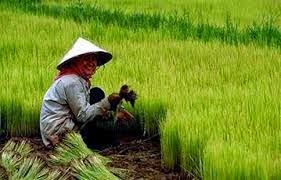 The History of Chinese Food:
The History of Chinese Food:The history of Chinese cuisine is marked by both variety and change. The archaeologist and scholar K.C. Chang says “Chinese people are especially preoccupied with food” and “food is at the center of, or at least it accompanies or symbolizes, many social interactions.” Over the course of history, he says, "continuity vastly outweighs change." He explains basic organizing principles which go back to earliest times and give a continuity to the food tradition, principally that a normal meal is made up of fan(饭/飯) (grains and other starches) and cai(菜) (vegetable or meat dishes).
Chinese cuisine as we now know it evolved gradually over the centuries as new food sources and techniques were introduced, discovered, or invented. Although many of the characteristics we think of as the most important appeared very early, others did not appear or did not become important until relatively late. The first chopsticks, for instance, were probably used for cooking, stirring the fire, and serving bits of food and were not initially used as eating utensils. They began to take on this role during the Han dynasty, but it was not until the Ming that they became ubiquitous for both serving and eating. It was not until the Ming that they acquired their present name (筷子, kuaizi) and their present shape. The wok may also have been introduced during the Han, but again its initial use was limited (to drying grains) and its present use (to stir-fry, as well as boiling, steaming, roasting, and deep-frying) did not develop until the Ming.
The Ming also saw the adoption of new plants from the New World, such as corn, peanuts, and tobacco. Wilkinson remarks that to "somebody brought up on late twentieth century Chinese cuisine, Ming food would probably still seem familiar, but anything further back, especially pre-Tang would probably be difficult to recognize as 'Chinese'.
The "Silk Road" is the conventional term for the routes through Central Asia linking the Iranian plateau with western China; along this trade route passed exotic foodstuffs that greatly enlarged the potential for Chinese cuisines, only some of which preserve their foreign origin in the radical for "foreign" that remains in their name.
 To be continued....
To be continued....

No comments:
Post a Comment